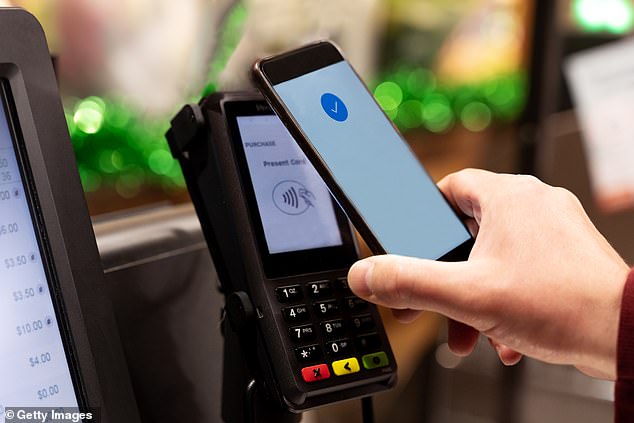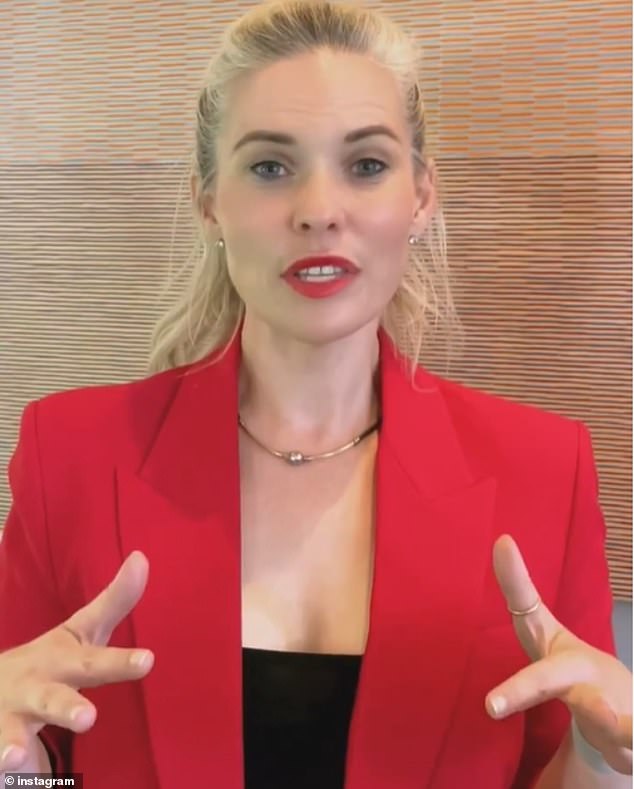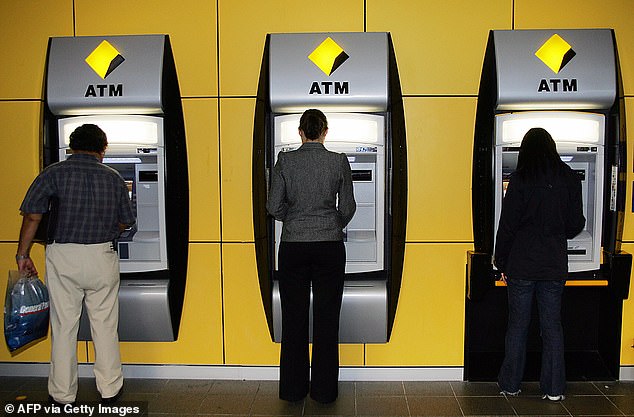Australia on track to become cashless as Commonwealth Bank, Westpac, ANZ and NAB close branches
Australia on track to become cashless as Commonwealth Bank, Westpac, ANZ and NAB close branches
Australia could soon become a cashless society, with a staggering number of bank branches closing within a year – as hundreds of ATMs were also removed.
In the year to June, 424 bank branches closed their doors, the Australian Prudential Regulation Authority announced on Wednesday.
The number of branches has fallen by more than a third or 37 percent since June 2017.
The banking regulator’s figures also showed the mass demolition of ATMs, with the number falling by 60 percent in six years.
In the past year alone, 718 ATMs have been removed, with less than one in five in-store transactions now made in cash.

Australia could soon become a cashless society, with a staggering number of bank branches closing in just a year – as hundreds of ATMs would also be removed (pictured is a digital tap-and-go reader)

Financial expert Sarah Wells, formerly Daily Mail Australia, could be cashless within three years
Remote parts of Australia also saw a huge drop in the number of bank branches, with 124 closing in six years.
Since 2017, 1,600 branches have closed across Australia.
The latest findings show the rapid transition to a cashless society across the country, with cash accounting for just 16 per cent of personal transactions by 2022, halving in just three years, Reserve Bank data shows.
Financial expert Sarah Wells, formerly Daily Mail Australia, could be cashless within three years.
Ms Wells said there are large groups of people who could suffer in a cashless society, including people in regional areas, the elderly and even children.
“I believe it is better for children to use cash,” Ms Wells said.
“Giving a child twenty dollars and taking him to the mall or to the movies teaches him how to budget and makes decisions through more careful thinking.”
‘There is a responsibility in handing over money and such valuable social interaction, they learn to say ‘please’ and ‘thank you’ and look people in the eye.’
There was a significant drop in the number of people using cash for transactions during the pandemic, amid fears the virus would spread.
The big four banks have all made progress in opening cashless branches.
Commonwealth, ANZ and NAB have all opened cashless branches where customers are directed to ATMs for ‘everyday banking’.
Westpac has embarked on a ‘co-location’ strategy where it will close a number of individual locations of brands it owns, such as St George, and move them into a Westpac branch.
The acceleration to online banking may be more convenient, but there are concerns about the cyber risks that come with it.
“Privacy and security issues with electronic payment methods remained the main reason for needing cash,” the RBA noted.
Recently, Commonwealth Bank CEO Matt Comyn told a Senate inquiry examining bank branch closures that it costs CBA $400 million to make cash available to its customers.

718 ATMs have been removed in the past year alone, with less than one in five in-store transactions now made in cash (pictured are Commonwealth Bank ATMs in Sydney)
The survey found that more than 90 percent of customers of the four major banks do their banking through the digital and online banking options offered by their respective bank.
Ms Wells believes the change to a cashless society is inevitable and said she is not in favor of such a big change happening so quickly.
“I think we need to stop thinking so much about ourselves and our own comfort and start thinking a little more about others,” she said.
